Managing employee attendance can be tricky, especially when your team is growing. If you’re still using paper registers or Excel sheets to track who’s coming to work and when they’re leaving, you’re spending too much time on something that should be simple. That’s because an attendance management system is so important in today’s modern times.
In 2026, businesses across India are moving away from old-school methods and choosing smart, automated systems that make attendance tracking easy and accurate. Whether you run a small startup or a large company, an attendance management system can save you time, reduce errors, and help your HR team focus on more important tasks.
This guide will walk you through everything you need to know about attendance management systems. You’ll learn what they are, how they work, why your company needs one, and which systems are best for your business in 2026.
What is an Attendance Management System?
An attendance management system is a software tool that automatically tracks when your employees come to work, take breaks, and leave for the day. Think of it as a digital helper that records all this information without anyone having to write it down manually.
These systems work through different methods like mobile apps, biometric machines (that scan fingerprints or faces), or simple web-based check-ins. Once employees mark their attendance, all the data gets stored in one central place where managers and HR teams can see it anytime, anywhere.
The best part? These systems don’t just track attendance. They also help manage leaves, calculate overtime, create reports, and even connect with your payroll software to make salary calculations easier. This means less paperwork, fewer mistakes, and more time for your team to focus on growing your business.
How Does an Attendance Management System Work?
Understanding how an attendance management system works is easier than you might think. Let’s break it down into simple steps:
Step 1: Employees Mark Their Attendance
Employees can mark their attendance in several ways depending on what system your company uses. They might use their fingerprint on a biometric machine, take a selfie on their phone, or simply click a button on a website or mobile app. Some systems even use GPS to make sure employees are at the right location when they check in.
Step 2: Data Gets Recorded Automatically
Once an employee marks their attendance, the system automatically records the exact time they checked in. No one has to write anything down or type it into a spreadsheet. The system does all the work instantly.
Step 3: Information Syncs to the Cloud
All the attendance data gets sent to a secure cloud storage system. This means managers can see who’s present, who’s absent, and who’s late from any device with internet access. Whether they’re working from home or at the office, they always have the latest information.
Step 4: System Processes the Data
The system then organizes all this information. It calculates total working hours, tracks overtime, identifies late arrivals, and notes any absences. It can also check if attendance follows company rules and alert managers about any issues.
Step 5: Reports Are Generated
Finally, the system creates easy-to-read reports that show attendance patterns. HR teams can use these reports to process payroll, track productivity, and make sure the company follows labor laws. Everything is organized, accurate, and ready to use.
This entire process happens automatically, saving hours of manual work every week.
Key Features an Attendance Management System Should Have
When choosing an attendance management system for your company, you want to make sure it has the right features. Here are the most important ones to look for:
1. Multiple Check-In Methods
A good system lets employees mark attendance in different ways. This includes mobile apps, web browsers, biometric scanners, or facial recognition. Having multiple options means every type of employee can easily check in, whether they work in the office, from home, or out in the field.
2. Real-Time Tracking and Monitoring
The system should show attendance updates instantly. Managers need to see who’s present right now, not hours later. Real-time tracking helps supervisors make quick decisions about work assignments and spot attendance problems early.
3. Biometric Integration
Biometric features like fingerprint or face recognition stop “buddy punching,” which is when one employee marks attendance for another. These systems verify each person’s identity, making sure attendance records are accurate and fair.
4. Leave Management
Your attendance system should also handle leave requests. Employees should be able to apply for time off through the same system, and managers should be able to approve or reject requests easily. The system should automatically update attendance records when leaves are approved.
5. Overtime Calculation
Tracking extra work hours is important for payroll. The system should automatically calculate overtime based on your company’s rules and include it in attendance reports. This ensures employees get paid correctly for their extra work.
6. Payroll Integration
The best attendance management systems connect directly with payroll software. This means attendance data automatically flows into salary calculations. No more manual data entry or worrying about mistakes when paying employees.
7. Mobile Access
Today’s workforce is mobile, so your system needs good mobile apps. Employees should be able to check in, view their attendance history, and request leaves from their phones. Managers should be able to approve requests and check reports on mobile devices too.
8. Customizable Policies
Every company has different rules about late arrivals, breaks, and overtime. Your system should let you set up custom policies that match your company’s needs. You should be able to define grace periods, penalties, and special rules for different departments.
These features work together to make attendance management effortless and accurate for your entire organization.
What are the Different Types of Attendance Management Systems
Not all attendance management systems are the same. Different companies need different solutions based on their size, work style, and budget. Here are the five most important types of attendance management systems available in 2026:
1. Biometric Attendance System
Biometric attendance management systems use unique physical features like fingerprints, facial features, or iris scans to identify employees. These systems are very accurate because they verify each person’s identity through something that can’t be faked or shared.
2. Online Attendance Management System
An online attendance management system works entirely through the internet. Employees log in through a web portal or app to mark their attendance. These cloud-based systems are perfect for companies with remote workers or multiple office locations.
3. Mobile-Based Attendance System
Mobile attendance systems run on smartphones and tablets. Employees download an app and use it to mark attendance with features like selfie verification, GPS location tracking, and geo-fencing.
These systems are ideal for sales teams, field workers, and companies embracing remote work. They’re also the most cost-effective option because you don’t need to buy special hardware. Most employees already have smartphones, so implementation is quick and easy.
4. Hybrid Systems
Many modern attendance systems combine multiple methods to suit different employee types. For example, a company might use biometric attendance management systems for office workers and GPS-based mobile check-ins for field staff.
This flexibility ensures every employee has an appropriate way to mark attendance while maintaining security and accuracy across the organization.
5. RFID and Card-Based Systems
RFID (Radio-Frequency Identification) systems use special cards or key fobs that employees tap on a reader to mark attendance. The card contains a unique chip that the system recognizes instantly.
While these systems are faster than manual registers, they have a weakness. Employees can share cards, which means someone could mark attendance for an absent colleague. That’s why many companies are moving to more secure options like biometric or facial recognition systems.
Why Your Company Needs an Attendance Management System
If you’re wondering whether your company really needs an attendance management system, here are some clear signs that it’s time to make the switch:
1. Manual Tracking Is Taking Too Much Time
Are your HR staff spending hours every week updating attendance sheets and fixing errors? Manual attendance tracking wastes valuable time that could be used for more important work. An automated system handles all the tracking instantly, freeing up your team to focus on hiring, training, and employee development.
2. You’re Experiencing Payroll Errors
When attendance records are wrong, salary calculations become wrong too. Employees get frustrated when they’re underpaid or overpaid. Wrong payroll can also create legal problems and damage your company’s reputation. An attendance management system for employees ensures accurate data flows into payroll, eliminating calculation mistakes.
3. Your Workforce Is Growing
Small companies might manage with paper registers or spreadsheets, but these methods don’t scale well. As you hire more people, manual tracking becomes increasingly difficult and error-prone. Implementing an automated system now will prepare your company for growth and save you from bigger problems later.
4. You Have Remote or Field Employees
How do you track attendance for employees who work from home, visit client sites, or work in the field? Traditional methods simply don’t work for remote teams. An online attendance management system with GPS tracking lets you monitor distributed teams accurately and fairly.
5. Time Theft and Buddy Punching Are Problems
If employees are marking attendance for absent colleagues or exaggerating their work hours, your company is losing money. Biometric attendance management systems and face recognition technology eliminate these fraudulent practices by verifying each person’s identity.
6. You Need Better Insights
Manual systems don’t give you the data you need to make smart decisions. An attendance management system provides reports and analytics that help you spot patterns, identify chronic absenteeism, optimize staffing, and improve productivity.
7. Employee Satisfaction Is Important
Modern employees expect transparent systems where they can view their own attendance records, check leave balances, and request time off easily. A good attendance management system empowers employees with self-service features, improving satisfaction and trust.
Key Benefits of Implementing an Attendance Management System in Your Organization
Investing in an attendance management system brings multiple advantages that improve operations across your entire company:
1. 100% Accurate Data
Automated systems eliminate human errors that happen with manual record-keeping. Every check-in and check-out is recorded precisely with timestamps. Biometric verification ensures only the actual employee can mark attendance, not a friend covering for them. This accuracy makes payroll processing smooth and dispute-free.
2. Massive Time Savings
Companies using automated attendance systems save an average of 4-5 hours per week. That’s over 20 hours per month that your HR team can spend on strategic activities instead of fixing attendance sheets. Automation handles everything from data collection to report generation without human intervention.
3. Significant Cost Reduction
While there’s an initial investment, attendance systems quickly pay for themselves. They reduce labor costs by eliminating time theft and buddy punching. Businesses save thousands of dollars annually by preventing payroll errors and reducing administrative overhead. There are no costs for paper, filing, or physical storage of attendance records.
4. Real-Time Visibility
Managers get instant access to attendance data from anywhere. They can see who’s present, absent, or late right now without waiting for reports. This real-time information helps with quick decision-making about work assignments, meeting schedules, and resource allocation.
5. Improved Productivity
When employees know their attendance is tracked accurately, they tend to be more punctual and responsible. Managers can identify patterns like frequent lateness or absenteeism and address them quickly. This accountability culture boosts overall workplace productivity.
6. Seamless Payroll Integration
The best attendance management software connects directly with payroll systems. Attendance data, including overtime and deductions, automatically flows into salary calculations. This integration eliminates data entry, reduces payroll processing time from days to hours, and ensures employees are paid accurately and on time.
7. Enhanced Employee Experience
Employees appreciate transparency and convenience. They can view their attendance records anytime, check leave balances, and request time off through mobile apps. Self-service features reduce dependency on HR for routine queries, making employees feel more empowered and satisfied.
8. Flexible for Modern Work
Today’s workforce includes office staff, remote workers, field employees, and hybrid teams. The best attendance management software supports all these work styles with features like GPS tracking, geo-fencing, and mobile check-ins. Your system adapts to your workforce, not the other way around.
9. Better Insights and Analytics
Advanced reporting features help you understand attendance patterns across your organization. You can see which departments have high absenteeism, which days see the most late arrivals, and how attendance affects productivity. These insights help you make data-driven decisions to improve operations.
These benefits combine to create a more efficient, transparent, and productive workplace where both management and employees win.
When to Implement an Attendance Management System
Timing matters when implementing new technology. Here are the ideal situations and stages when you should introduce an attendance management system:
1. During Company Growth Phases
The best time to implement an automated system is when your company is growing. If you’re hiring rapidly, adding new departments, or opening new locations, put an attendance system in place early. It’s much easier to start with the right tools than to switch from manual methods later when you have hundreds of employees.
2. Before Payroll Problems Escalate
If you’re already experiencing frequent payroll errors or complaints from employees about incorrect salary calculations, act immediately. Don’t wait until these problems damage employee morale or create legal issues. Implementing an attendance management system now will prevent bigger problems down the road.
3. When Moving to Remote or Hybrid Work
Planning to allow employees to work from home or adopting a hybrid model? This is the perfect time to implement an online attendance management system. Traditional sign-in sheets won’t work for remote teams. Set up a system with GPS tracking and mobile access before making the work arrangement changes.
4. At the Start of a New Financial Year
Many companies choose to implement attendance systems at the beginning of their financial year. This timing allows you to start fresh with clean data and align the new system with budgets and business plans. It also gives you a full year of consistent data for analysis and compliance reporting.
5. During HR System Upgrades
If you’re already upgrading other HR systems or implementing new payroll software, add attendance management to the project. It’s more efficient to integrate multiple systems at once rather than in stages. Plus, employees only need to learn new tools one time instead of dealing with constant changes.
6. After Noticing Time Theft Issues
If you’ve discovered buddy punching or employees falsifying their work hours, implement a biometric attendance management system right away. The longer you wait, the more money your company loses. Systems with facial recognition or fingerprint scanning will immediately stop these fraudulent practices.
7. Before Expanding to Multiple Locations
Planning to open branches in different cities or countries? Implement a cloud-based attendance system before the expansion. This ensures all locations use the same system from day one, making it easy to manage attendance across your entire organization from a central dashboard.
Remember, there’s no perfect time, but waiting too long costs more than acting now. The sooner you implement an attendance management system, the sooner you’ll start enjoying its benefits.
Top Attendance Management Systems to Consider in 2026
Choosing the right attendance management software for your company can feel overwhelming with so many options available. Here’s a curated list of the best attendance management software in India for 2026:
1. Savvy HRMS: Best hr & payroll management software in India
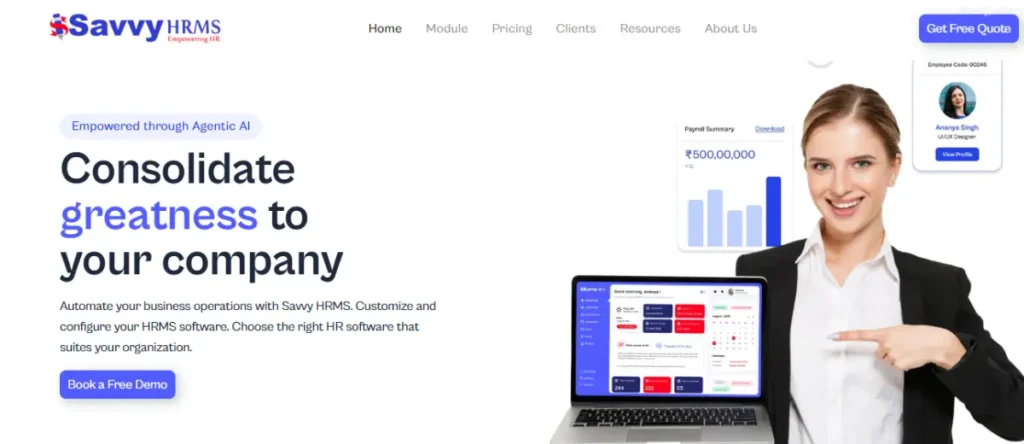
Savvy HRMS is a highly customizable attendance management system designed specifically for Indian businesses. With over 700 organizations and 700,000+ users, it has proven itself as a reliable solution. The platform offers flexible attendance tracking with mobile apps, biometric integration, and seamless payroll connection. It’s especially good for companies that need to customize attendance policies for different departments and locations.
2. factoHR
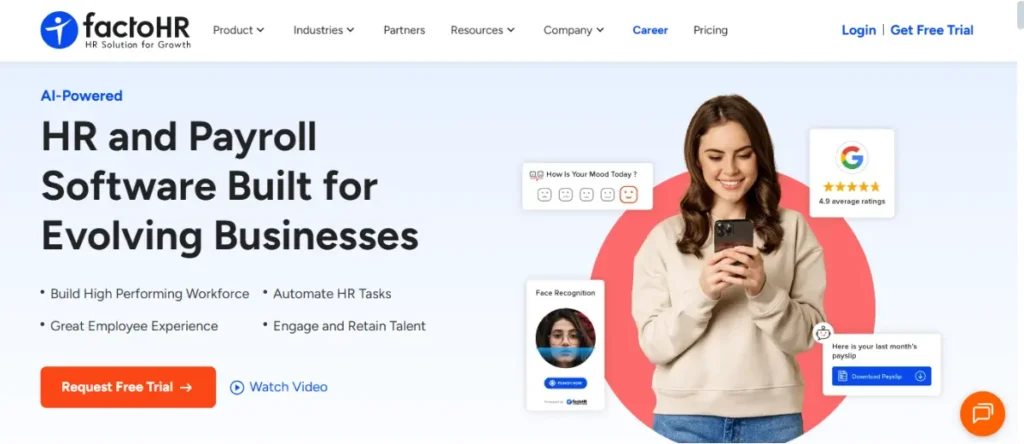
factoHR puts attendance management on autopilot with features like touchless attendance, AI face recognition, and geo-fence punch. The platform is trusted by thousands of businesses across India for its accuracy and innovative features. It’s designed for small and medium-sized enterprises seeking comprehensive automated solutions.
3. GreytHR
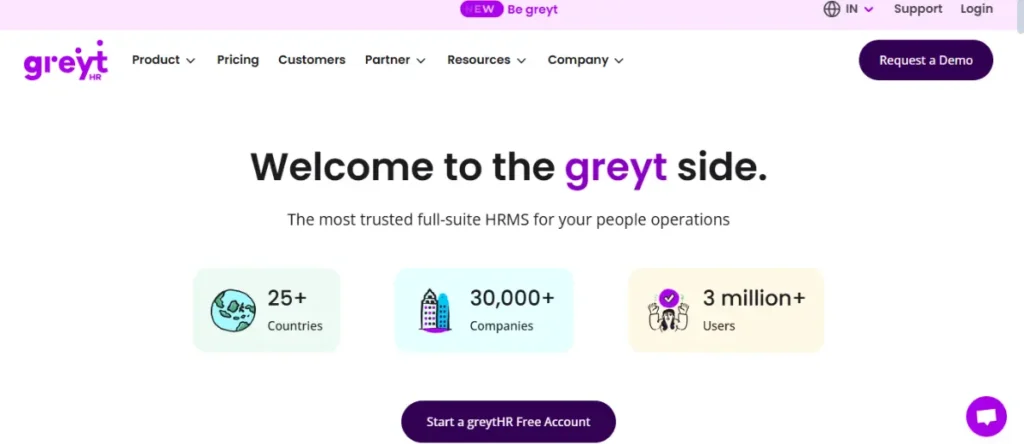
GreytHR is one of the most popular attendance management system platforms in India. It combines multiple attendance methods including selfie-based, biometric, and facial recognition. The platform offers real-time automation and flexible attendance marking options, making it suitable for businesses of various sizes.
4. Keka HR

Keka offers the simplest and cleanest interface in the market with a gamified approach to attendance management. It includes mobile selfie attendance, biometric integration, geo-fencing, and seamless payroll integration. The platform is perfect for startups and SMBs looking for a user-friendly attendance management system for employees.
5. Zimyo
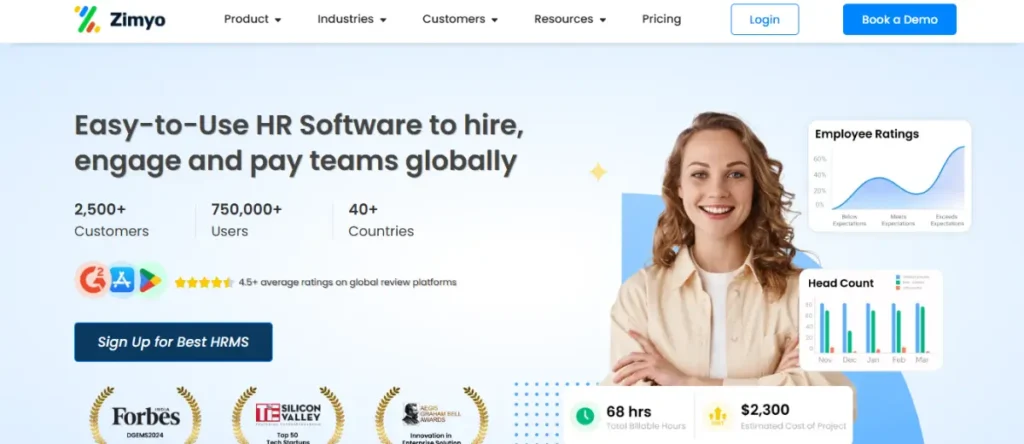
Zimyo provides effortless attendance monitoring trusted by 2,500+ customers. The platform offers geo-fenced attendance, mobile app access, real-time tracking, shift management, and integrated payroll. It’s designed for businesses with remote, on-site, or hybrid workforce arrangements.
6. Pocket HRMS
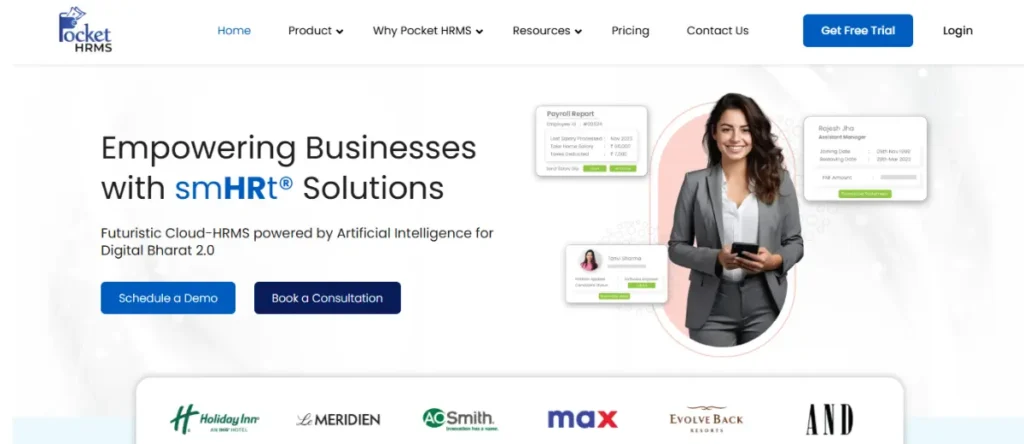
Pocket HRMS delivers a feature-rich attendance management system with AI-powered facial recognition through SmHRty IDentify. The platform offers contactless attendance marking, geo-tracking, WhatsApp integration, and biometric integration for multi-branch tracking. It’s suitable for small and medium businesses requiring comprehensive features.
Factors to Consider When Choosing
When evaluating these systems, consider your company size, budget, workforce type (remote, hybrid, or on-site), required features, and integration needs with existing HR and payroll systems. Most providers offer free trials or demos, so test a few options before making your final decision.
Remember, the best attendance management software is the one that fits your specific business needs and grows with your company.
Conclusion
Implementing an attendance management system is a must for modern businesses in 2026. The right system saves time, cuts errors, ensures compliance, and boosts productivity. Whether you’re a startup or large company, automated attendance tracking transforms your HR operations while helping you grow.
Ready to simplify your attendance management? Choose Savvy HRMS, India’s most trusted attendance management system trusted by 700+ organizations and 700,000+ users. Savvy HRMS delivers facial recognition, real-time tracking, seamless payroll integration, mobile access with GPS, and complete compliance-all in one platform. Transform your HR operations today. Get started with Savvy HRMS now and experience smarter attendance management that drives growth and accuracy.


